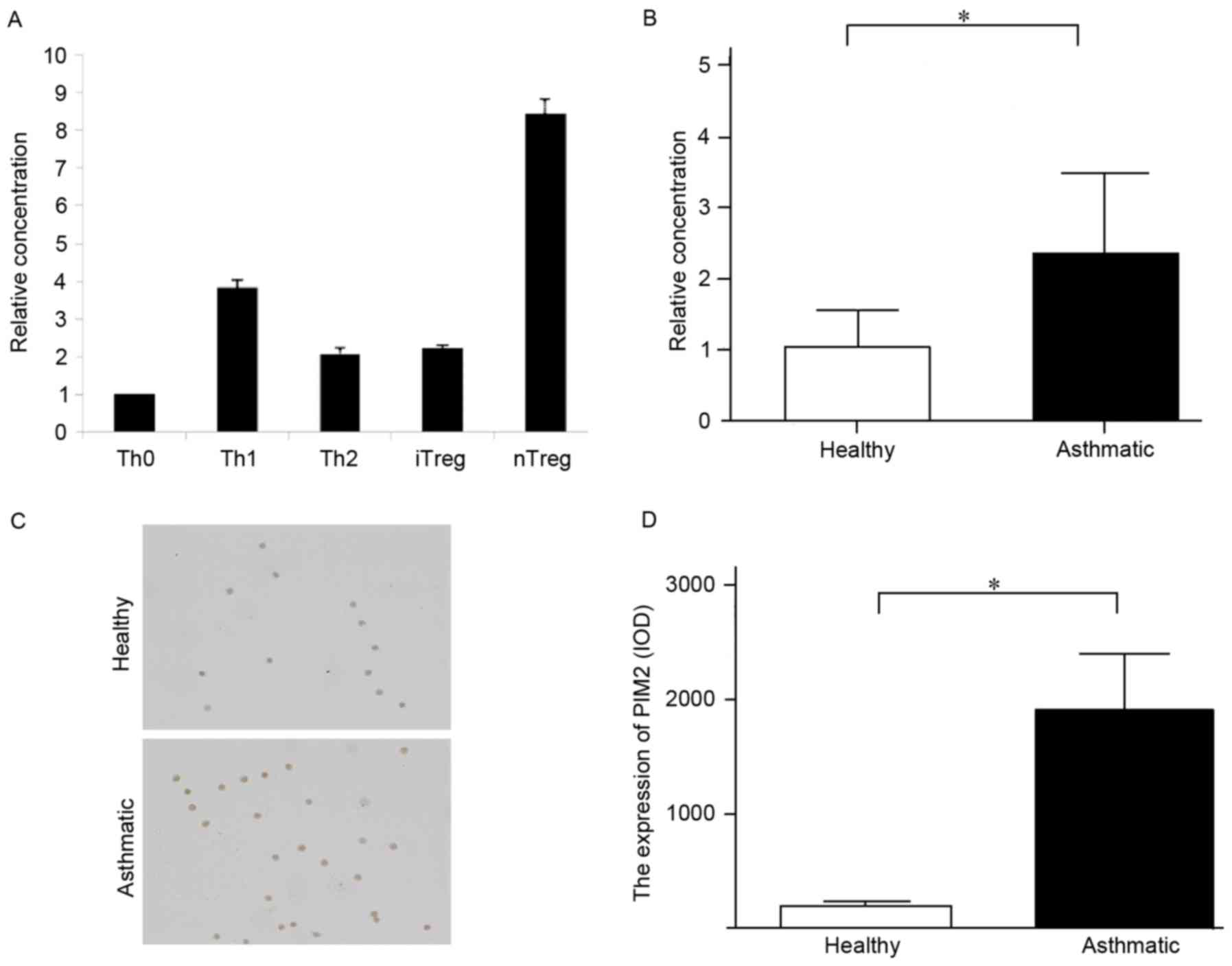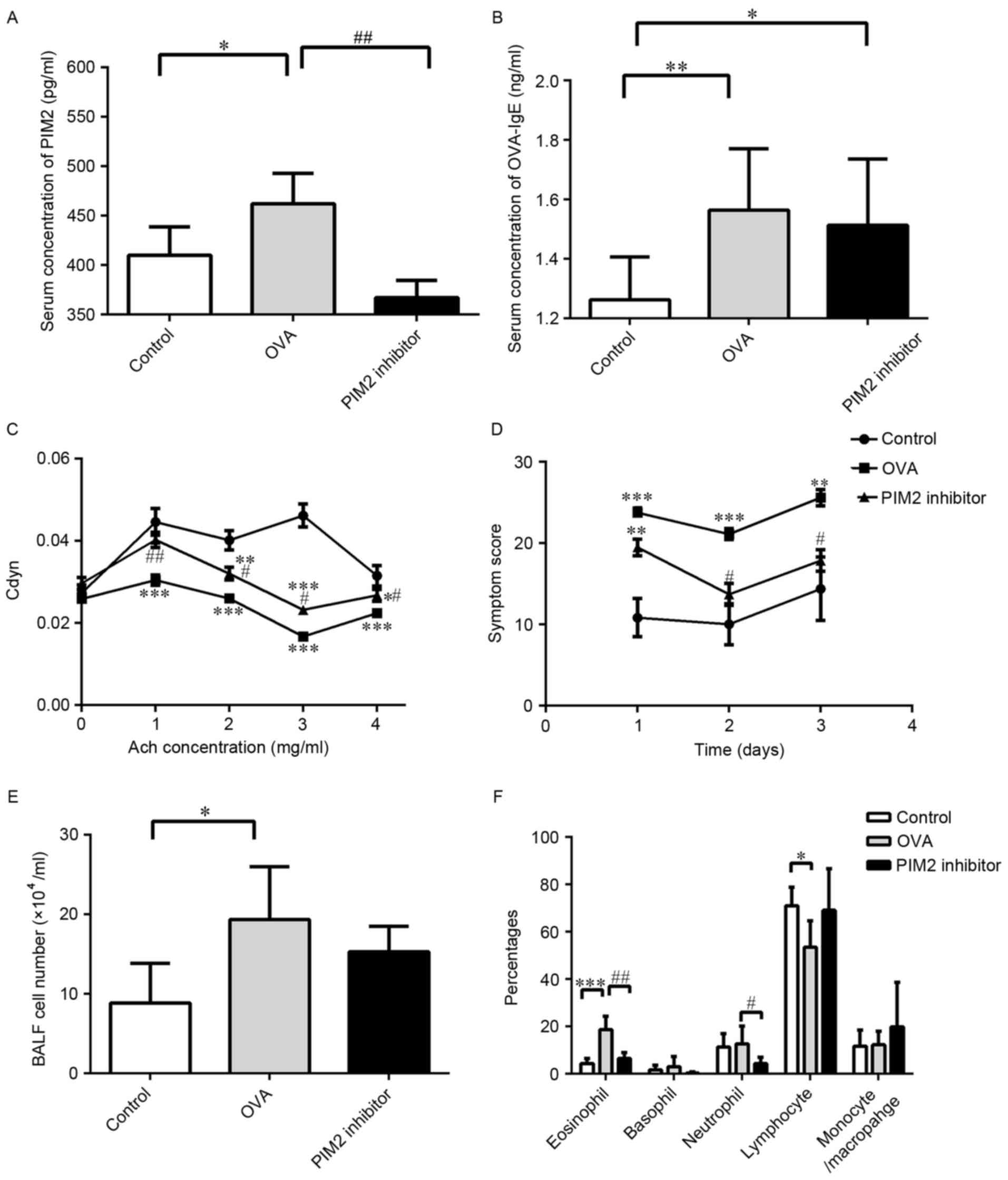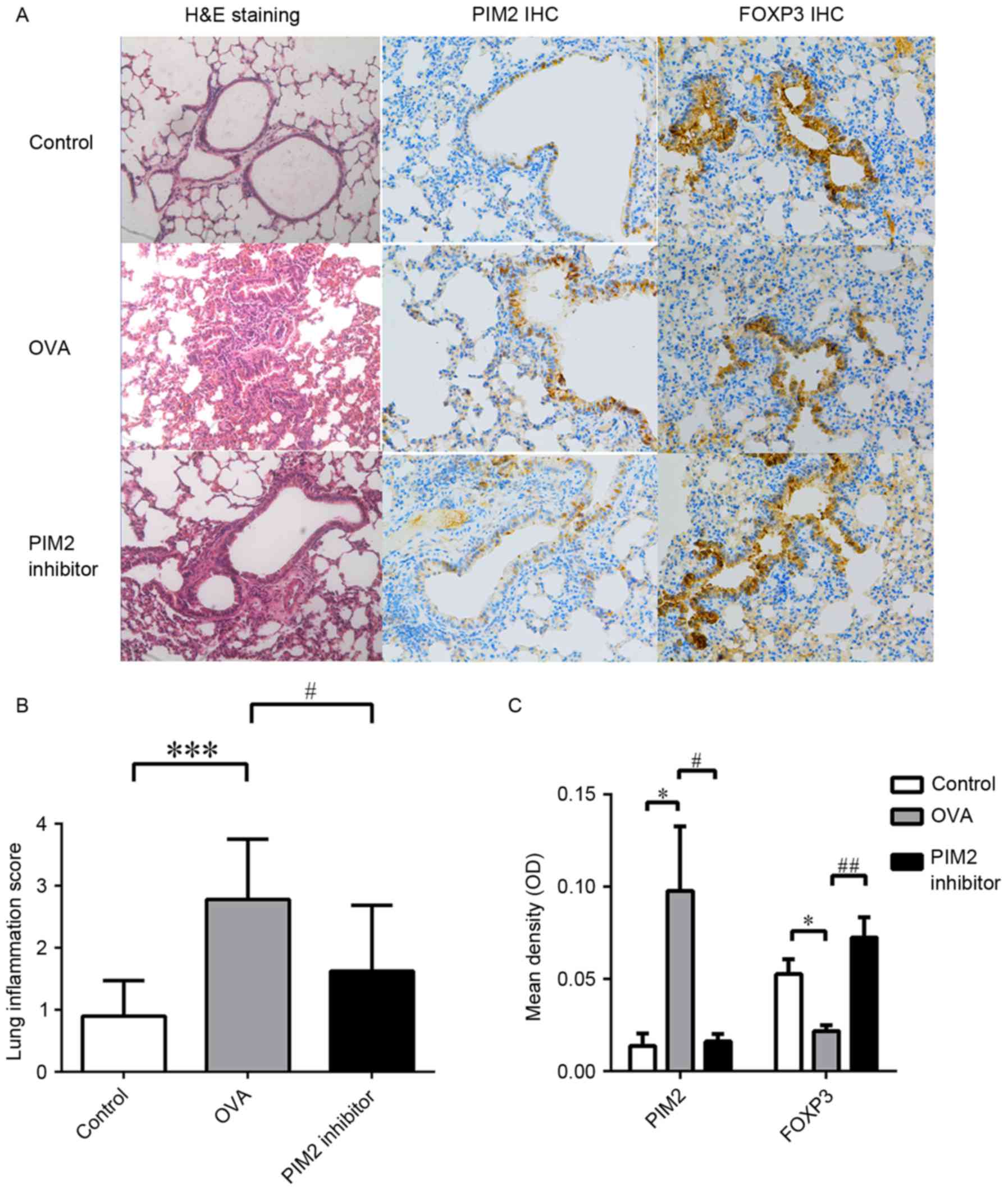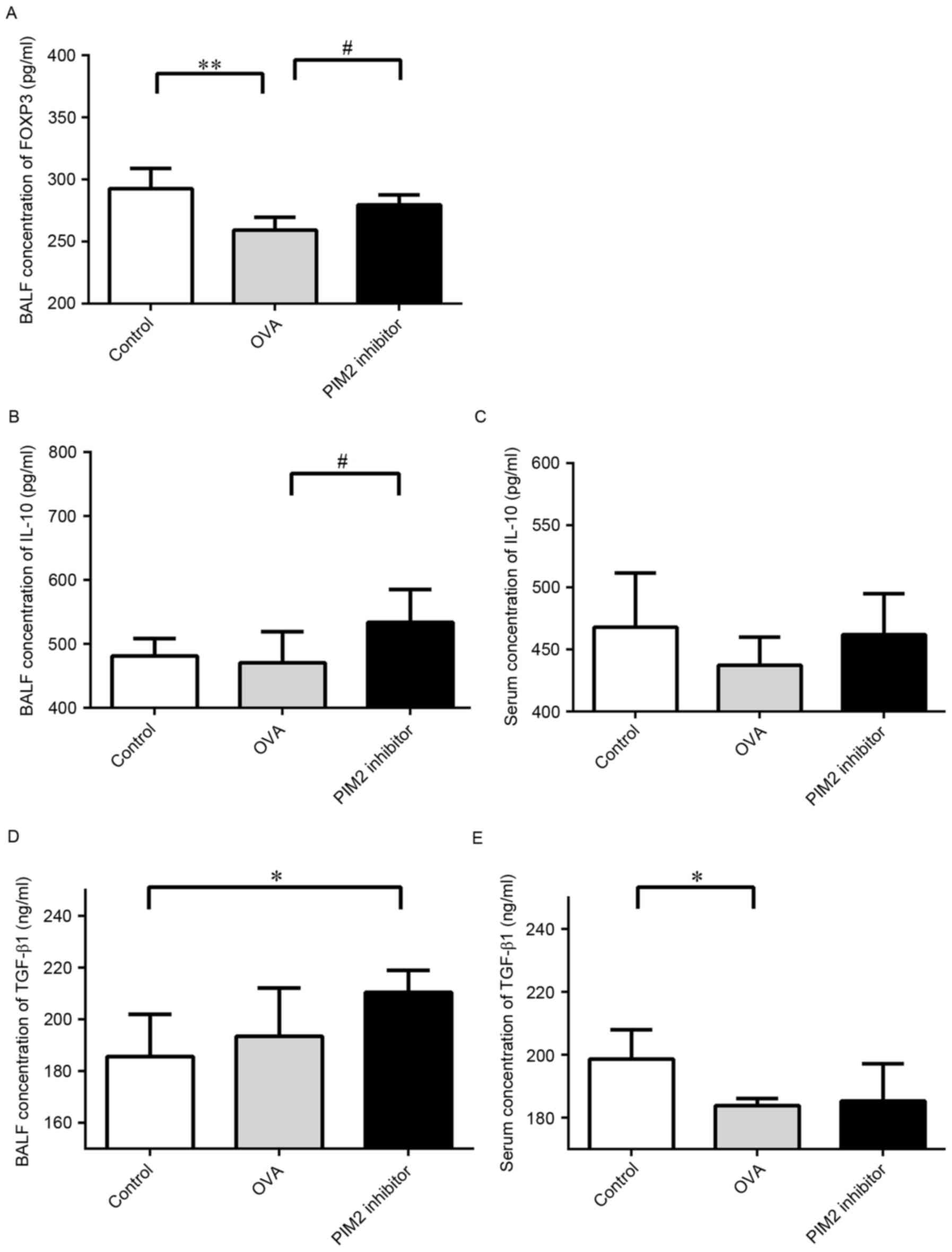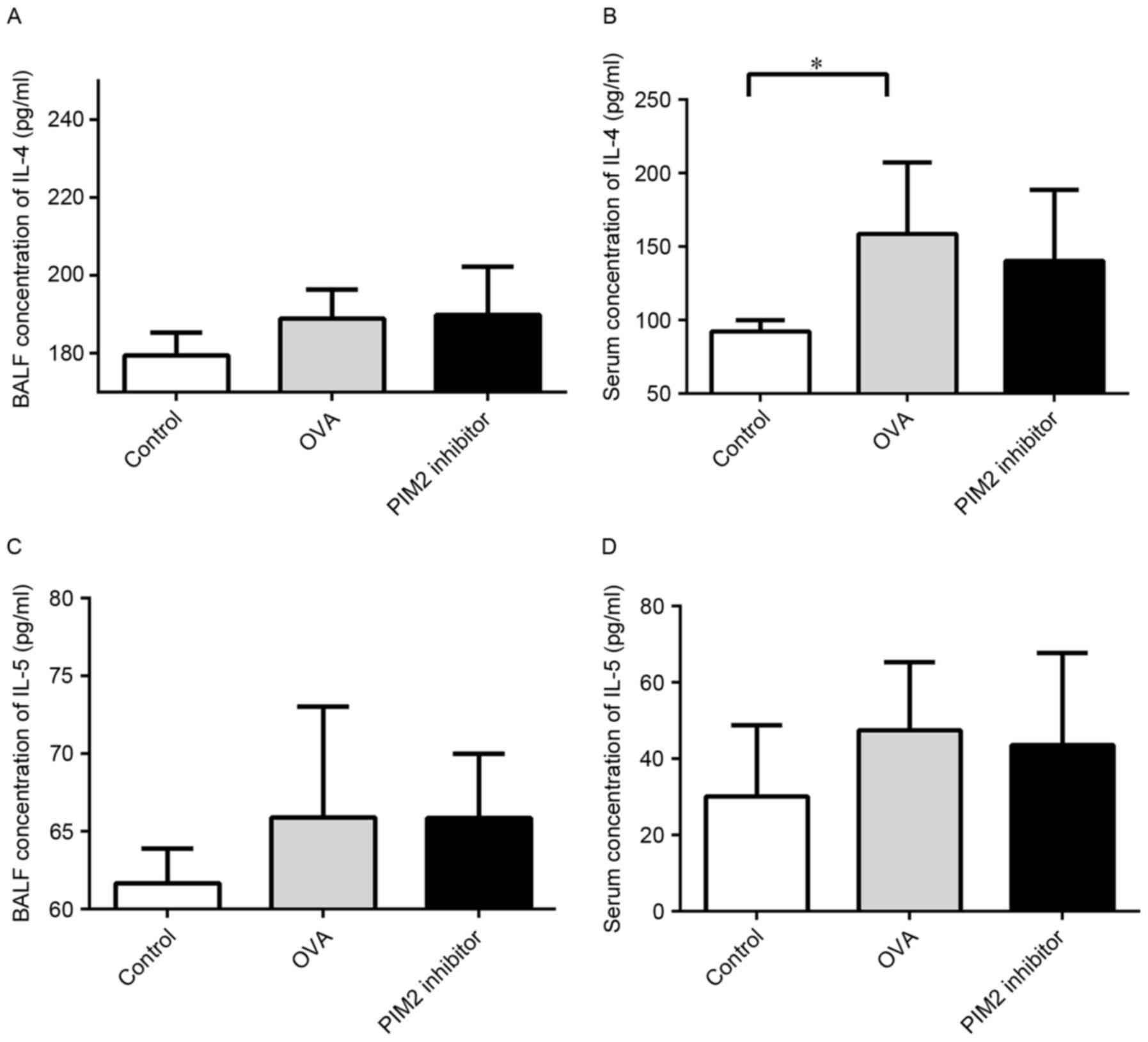|
1
|
From the global strategy for asthma
management and prevention, global initiative for asthma (GINA).
2015.http://ginasthma.org/wp-content/uploads/2016/01/GINA_Report_2015_Aug11-1.pdfDecember.
2015
|
|
2
|
Hirahara K and Nakayama T: CD4+ T-cell
subsets in inflammatory diseases: Beyond the Th1/Th2 paradigm. Int
Immunol. 28:163–171. 2016. View Article : Google Scholar : PubMed/NCBI
|
|
3
|
Stelmaszczyk-Emmel A: Regulatory T cells
in children with allergy and asthma: It is time to act. Respir
Physiol Neurobiol. 209:59–63. 2015. View Article : Google Scholar : PubMed/NCBI
|
|
4
|
Kasper IR, Apostolidis SA, Sharabi A and
Tsokos GC: Empowering regulatory T cells in autoimmunity. Trends
Mol Med. 22:784–797. 2016. View Article : Google Scholar : PubMed/NCBI
|
|
5
|
Qiao YC, Shen J, Hong XZ, Liang L, Bo CS,
Sui Y and Zhao HL: Changes of regulatory T cells, transforming
growth factor-beta and interleukin-10 in patients with type 1
diabetes mellitus: A systematic review and meta-analysis. Clin
Immunol. 170:61–69. 2016. View Article : Google Scholar : PubMed/NCBI
|
|
6
|
Uddin N, Kim RK, Yoo KC, Kim YH, Cui YH,
Kim IG, Suh Y and Lee SJ: Persistent activation of STAT3 by
PIM2-driven positive feedback loop for epithelial-mesenchymal
transition in breast cancer. Cancer Sci. 106:718–725. 2015.
View Article : Google Scholar : PubMed/NCBI
|
|
7
|
Yin G, Li Y, Yang M, Cen XM and Xie QB:
Pim-2/mTORC1 pathway shapes inflammatory capacity in rheumatoid
arthritis synovial cells exposed to lipid peroxidations. Biomed Res
Int. 2015:2402102015. View Article : Google Scholar : PubMed/NCBI
|
|
8
|
Deng G, Nagai Y, Xiao Y, Li Z, Dai S,
Ohtani T, Banham A, Li B, Wu SL, Hancock W, et al: Pim-2 kinase
influences regulatory T cell function and stability by mediating
Foxp3 protein N-terminal phosphorylation. J Biol Chem.
290:20211–20220. 2015. View Article : Google Scholar : PubMed/NCBI
|
|
9
|
Livak KJ and Schmittgen TD: Analysis of
relative gene expression data using real-time quantitative PCR and
the 2(-Delta Delta C(T)) method. Methods. 25:402–408. 2001.
View Article : Google Scholar : PubMed/NCBI
|
|
10
|
Massoud AH, Charbonnier LM, Lopez D,
Pellegrini M, Phipatanakul W and Chatila TA: An asthma-associated
IL4R variant exacerbates airway inflammation by promoting
conversion of regulatory T cells to TH17-like cells. Nat Med.
22:1013–1022. 2016. View
Article : Google Scholar : PubMed/NCBI
|
|
11
|
Narlik-Grassow M, Blanco-Aparicio C and
Carnero A: The PIM family of serine/threonine kinases in cancer.
Med Res Rev. 34:136–159. 2014. View Article : Google Scholar : PubMed/NCBI
|
|
12
|
Keeton EK, McEachern K, Dillman KS,
Palakurthi S, Cao Y, Grondine MR, Kaur S, Wang S, Chen Y, Wu A, et
al: AZD1208, a potent and selective pan-Pim kinase inhibitor,
demonstrates efficacy in preclinical models of acute myeloid
leukemia. Blood. 123:905–913. 2014. View Article : Google Scholar : PubMed/NCBI
|
|
13
|
Li MO and Rudensky AY: T cell receptor
signalling in the control of regulatory T cell differentiation and
function. Nat Rev Immunol. 16:220–233. 2016. View Article : Google Scholar : PubMed/NCBI
|
|
14
|
Zhang XH, Yu HL, Wang FJ, Han YL and Yang
WL: Pim-2 modulates aerobic glycolysis and energy production during
the development of colorectal tumors. Int J Med Sci. 12:487–493.
2015. View Article : Google Scholar : PubMed/NCBI
|
|
15
|
Alvarado Y, Giles FJ and Swords RT: The
PIM kinases in hematological cancers. Expert Rev Hematol. 5:81–96.
2012. View Article : Google Scholar : PubMed/NCBI
|
|
16
|
Yang J, Li X, Hanidu A, Htut TM, Sellati
R, Wang L, Jiang H and Li J: Proviral integration site 2 is
required for interleukin-6 expression induced by interleukin-1,
tumour necrosis factor-α and lipopolysaccharide. Immunology.
131:174–182. 2010. View Article : Google Scholar : PubMed/NCBI
|
|
17
|
Brault L, Gasser C, Bracher F, Huber K,
Knapp S and Schwaller J: PIM serine/threonine kinases in the
pathogenesis and therapy of hematologic malignancies and solid
cancers. Haematologica. 95:1004–1015. 2010. View Article : Google Scholar : PubMed/NCBI
|
|
18
|
Basu S, Golovina T, Mikheeva T, June CH
and Riley JL: Cutting edge: Foxp3-mediated induction of pim 2
allows human T regulatory cells to preferentially expand in
rapamycin. J Immunol. 180:5794–5798. 2008. View Article : Google Scholar : PubMed/NCBI
|
|
19
|
Shin YS, Takeda K, Shiraishi Y, Jia Y,
Wang M, Jackson L, Wright AD, Carter L, Robinson J, Hicken E and
Gelfand EW: Inhibition of Pim1 kinase activation attenuates
allergen-induced airway hyperresponsiveness and inflammation. Am J
Respir Cell Mol Biol. 46:488–497. 2012. View Article : Google Scholar : PubMed/NCBI
|
|
20
|
Ezell SA, Wang S, Bihani T, Lai Z,
Grosskurth SE, Tepsuporn S, Davies BR, Huszar D and Byth KF:
Differential regulation of mTOR signaling determines sensitivity to
AKT inhibition in diffuse large B cell lymphoma. Oncotarget.
7:9163–9174. 2016. View Article : Google Scholar : PubMed/NCBI
|
|
21
|
Asanuma S, Tanaka J, Sugita J, Kosugi M,
Shiratori S, Wakasa K, Shono Y, Shigematsu A, Kondo T, Kobayashi T,
et al: Expansion of CD4(+) CD25(+) regulatory T cells from cord
blood CD4(+) cells using the common γ-chain cytokines (IL-2 and
IL-15) and rapamycin. Ann Hematol. 90:617–624. 2011. View Article : Google Scholar : PubMed/NCBI
|
|
22
|
Ojiaku CA, Yoo EJ and Panettieri RA Jr:
Transforming growth factor β1 function in airway remodeling and
hyperresponsiveness. The missing link? Am J Respir Cell Mol Biol.
56:432–442. 2017. View Article : Google Scholar : PubMed/NCBI
|
|
23
|
Koćwin M, Jonakowski M, Przemęcka M, Zioło
J, Panek M and Kuna P: The role of the TGF-SMAD signalling pathway
in the etiopathogenesis of severe asthma. Pneumonol Alergol Pol.
84:290–301. 2016. View Article : Google Scholar : PubMed/NCBI
|



